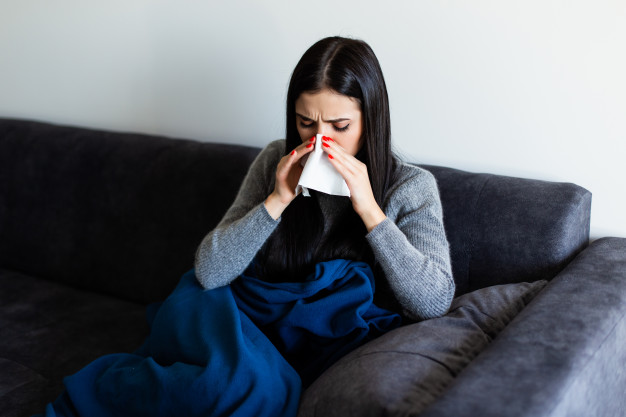Hay fever has obvious seasonal and regional characteristics, mainly manifested as itchy eyes, watery eyes, red and swollen eyelids; itchy nasal cavity, continuous sneezing, often as many as a dozen at a time, and increased watery secretions after sneezing. Because hay fever usually occurs when spring flowers bloom, in Western medicine, this is a disease caused by pollen allergies. But in Chinese medicine, this is caused by the accumulation of too much cold in the body. We all have this experience: when we sneeze, the pores and muscles of our body will contract, we feel chills all over our body, and the snivel is also cold. This is the cold in the body. In fact, most hay fever is not caused by real pollen allergies, so the application of anti-allergic drugs often does not work well, and it will recur every year. TCM treatment of hay fever is much simpler. We use moxa, acupuncture or herbs to help the body eliminate the long-term accumulation of cold. When the cold decreases, the symptoms of hay fever will naturally improve.
花粉症有明显的季节性和地区性,主要表现为眼部发痒、流泪、眼睑红肿;鼻腔发痒,喷嚏连续发作,常一次多达十几个,喷嚏后水样分泌物增多。因为花粉症通常在春暖花开的时候发作,在西方医学看来,这是花粉的过敏所引起的疾病。但是在中医来看,这是由于体内积累太多寒导致的。我们都有这样的经验:当我们打喷嚏的时候,全身的毛孔肌肉会收缩,全身感到一阵寒战,鼻涕也是冷冷的。这样的情况就属于寒在身体里面。因为实际上大多数的花粉症并不是真正的花粉过敏引起的,所以应用抗过敏的药物治疗往往效果不好,而且会每一年都会复发。中医处理花粉症就简单得多。我们会运用艾,针灸或是草药帮助身体排除长期积累的寒,当寒减少之后,花粉症的症状自然就会随之改善。

